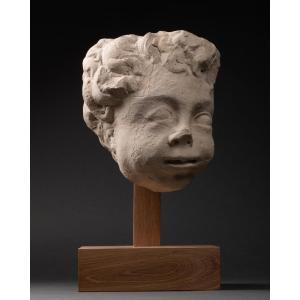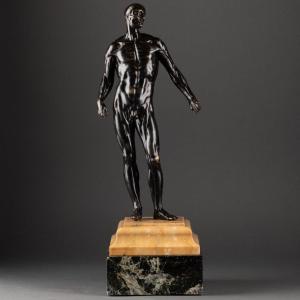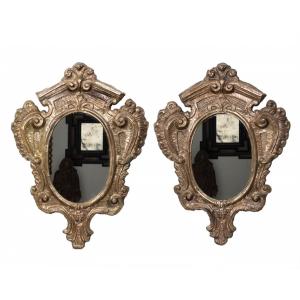On our dish, we find a representation of a woman up to her bust on a blue background. Her eyes are turned to the left. Her complexion is pale with rosy cheeks. Her hair is tied back and she is wearing a golden hairnet. A few strands fall over her face. She is wearing a white tunic with a square collar and intricate blue embroidery. A pretty green piping is attached to her ruff. She is also wearing a long necklace.
In the background, a sinuous banner with her name written on it identifies her.
‘Majolica is Italian Renaissance earthenware. It is a glazed ceramic technique that originated in medieval Italy and is particularly renowned for its bright colours and detailed patterns. It involves applying an opaque, white glaze (based on tin oxide) to a piece of terracotta, onto which coloured decorations are painted before a second firing. In Casteldurante, in northern Italy, artists specialised in bust portraits of women or ‘belle donne’ or heroes of Antiquity. The female portrait is generally associated with a first name (Virginia, Caterina, Faustina...), which may evoke historical or mythological figures.
Produced in series, the theme of these pieces is often a woman and a moral virtue. They were not used for meals, but were displayed in the homes of their wealthy owners. These portraits are very numerous, and we can find several matches in Casteldurante majolica ceramics. They are made up in the same way, with the portrait of a woman in the foreground against a blue background, and her name in the background added in a sinuous banner.
Casteldurante majolica is characterised by a remarkable uniformity in its execution. Each piece features a portrait of a woman against a blue background, accompanied by a banner bearing her name.
The choice of colours, always the same, reinforces this codified aesthetic, embodying the elegance and simplicity characteristic of Casteldurante's production.















































 Le Magazine de PROANTIC
Le Magazine de PROANTIC TRÉSORS Magazine
TRÉSORS Magazine Rivista Artiquariato
Rivista Artiquariato